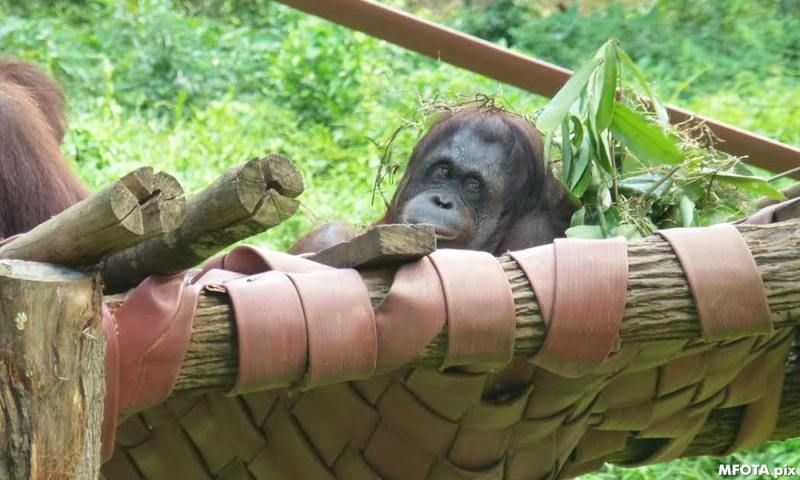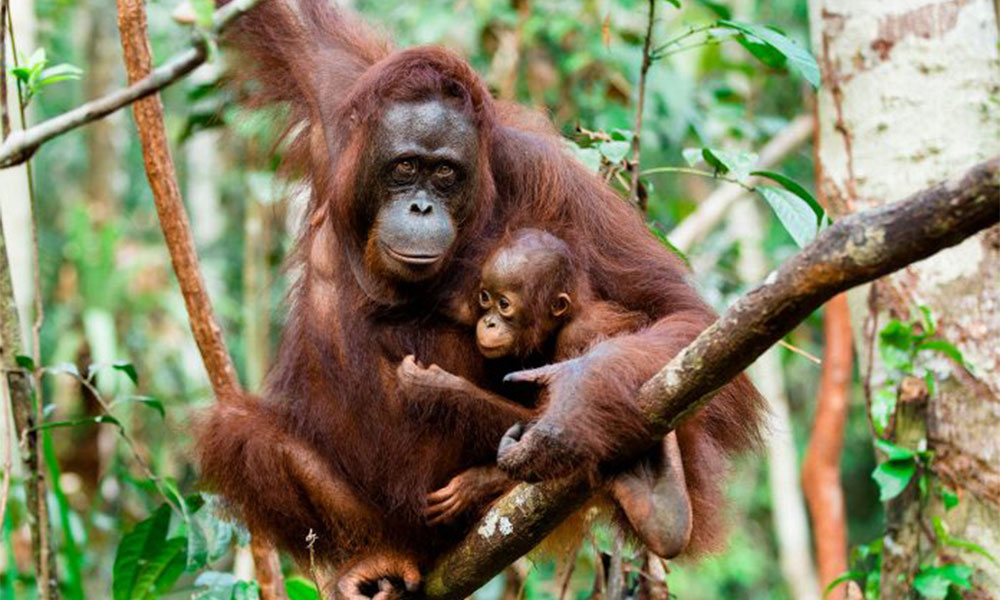Orangutan numbers fall in Sabah forests 'within oil palm landscapes'
The orangutan population in forest patches within Sabah's oil palm plantations have dwindled over the past 15 years, a survey by WWF-Malaysia has found.
The survey showed that orangutan numbers in Kulamba and Tabin have dropped by 30 percent and 15 percent respectively, while at least 650 orangutan were lost from protected areas of the state's eastern lowlands since 2002.
“The monoculture nature of oil palm plantations means that they tend not to support species that are dependent on forest environment, like the orangutan,” WWF-Malaysia said in a statement today.
It explained that such forest patches within plantation landscapes are important as the orangutan use them to travel between adjacent forest areas.
“This connectivity, through wildlife corridors that link patches of forest, is key to orangutan survival at oil palm plantation landscapes, especially in the lowlands of Sabah,” state Wildlife Department director Augustine Tuuga was quoted as saying.
Orangutans are found only in swatches in Malaysia and Indonesia.
The Bornean orangutan and the Sumatran orangutan, along with a newly discovered third species – only identified in Indonesia in 2017 – are listed as critically endangered by the International Union for Conservation of Nature's (IUCN) Red List of Threatened Species.
Despite the decline, the survey on the great ape population in Sabah – conducted between 2002 to 2017 – noted that the overall population has been stable at 11,000 orangutans.
It also concluded that Sabah remains Malaysia’s stronghold of the Bornean orangutan, with more than 70 percent of the population found in totally protected areas in the state.
An important factor, it said, was the absence of the orangutan hunting in the region.
WWF-Malaysia stressed that this number can be maintained as long as proper conservation management measures continue to be in place.
Populations of the species in Deramakot and Ulu Segama showed a slight increase of 557 in 2017 from 5,376 individuals surveyed in 2012, while another population of at least 1,000 orangutans were discovered in the Imbak-Kalabakan region of southwest Sabah.
“The maintenance of numbers over the 15-year period suggests that orangutan populations can be sustained in well-managed logged forests, underscoring the importance of continued conservation management in the central forests of Sabah.
"An important factor is the absence of hunting of orangutan in this region,” it said.
The survey is detailed in a scientific paper released today, titled “Changes to Sabah’s orangutan population in recent times: 2002-2017”.
Earlier this month, Primary Industries Minister Teresa Kok criticised an international school over a performance which negatively depicted the palm oil industry, claiming it led to deforestation and killed up to 3,000 orangutans annually.
The school has since apologised, explaining that its students were merely depicting an anti-palm oil video clip produced by international NGO Greenpeace.
RM12.50 / month
- Unlimited access to award-winning journalism
- Comment and share your opinions on all our articles
- Gift interesting stories to your friends
- Tax deductable

